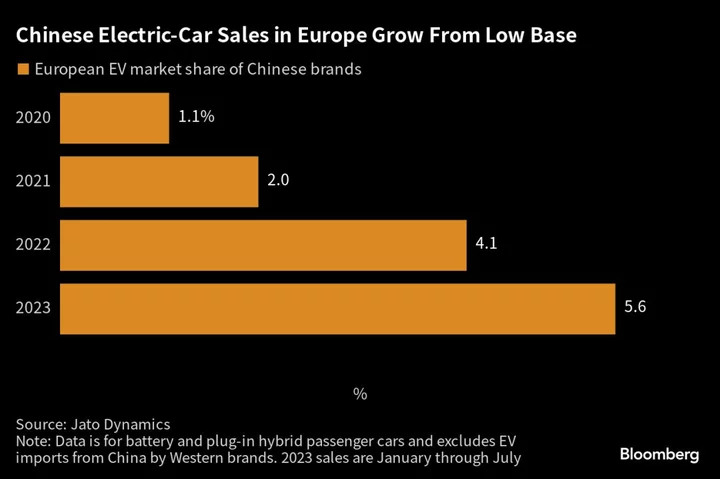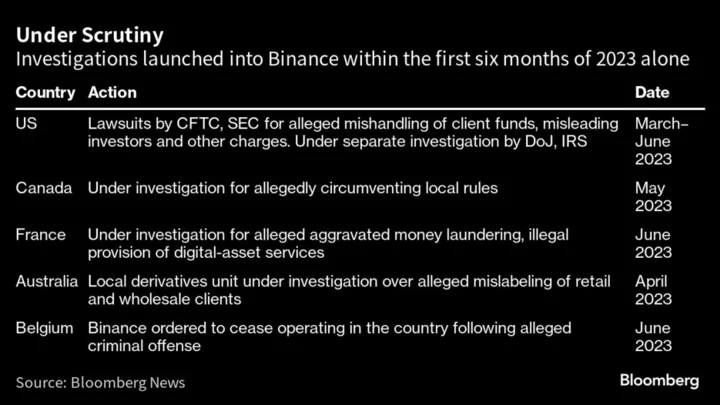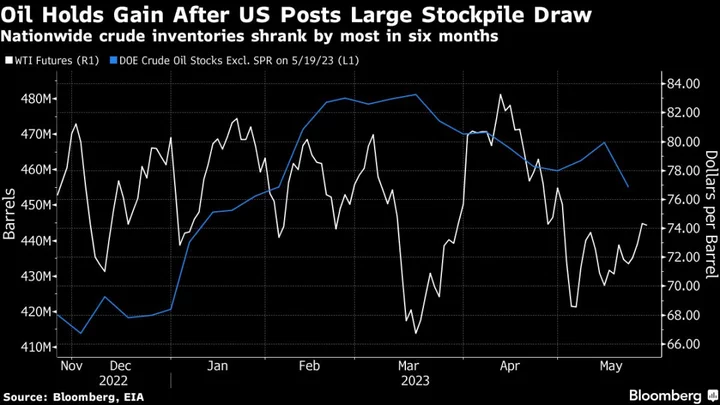EV variety is easy to find outside the US. Where American drivers now have about 50 electric cars to choose from, Europe’s array is almost double that, and China’s nearly triple. With that variety come more small and midsize options, and more cars with price tags that won’t break the bank.
Ask any US automaker and they’ll say this is mainly a profitability problem. To pay for investments in electrification, carmakers are first focusing on trucks, SUVs and other premium models. That same tension is at the center of the United Auto Workers strike, which is pitting factory workers looking to preserve pay and benefits in an EV world against carmakers who say they can’t go electric, meet union demands and stay in the black.
China, meanwhile, has become a global powerhouse in electric cars: It’s expected to account for about 60% of the world’s 14.1 million new passenger EV sales this year, according to BloombergNEF. Many of those options are small and affordable; some are downright cheap. Take BYD’s Atto 3, a small, front-wheel-drive crossover with one of the most advanced batteries in the game. The Atto 3 costs just $20,000 in China and starts at $38,000 in the UK and Europe. But not a single Atto 3 is headed for the US market.
Why not? The answer is part logistics and part politics.
Although the US has a strong track record of mainstreaming foreign cars — Toyota is one of the country’s most popular brands — the challenges of entering such a competitive market are hard to overstate. All foreign automakers do so at a disadvantage, starting with a 2.5% tariff on most imports. But in two categories that disadvantage is substantial enough to almost entirely stamp out foreign competition: pickup trucks and cars made in China.
Since a 1964 spat over European tariffs on poultry, the US has levied a 25% tax on imported trucks, now known as the “chicken tax.” That surcharge largely cleared the road for Detroit’s truck titans — at least until Japanese brands established US factories to get around it — and today means tricky economics for any foreign automaker looking to crack the lucrative American truck market.
The China dynamic is more recent. In 2018, just as China was starting to crank out a wave of compact EVs, US president Donald Trump implemented tariffs on about $370 billion of imports from the country each year, including a 27.5% tariff on cars made in China. That policy persists under the Biden administration. In Europe, by contrast, the tariff on Chinese cars is 9% — low enough for those machines to at least trickle into the market.
“If you have a 20% to 25% cost advantage, it makes sense to go to countries where even after the tariff you are price-competitive," Aakash Arora, a managing director in Boston Consulting Group’s auto practice, told Bloomberg News.
But tariffs are just the first hurdle for a global car company looking to crack the US market. Most Chinese cars haven’t been engineered with US safety regulations in mind; just going through those protocols is an expensive and elaborate process. Then there’s the cost of building a retail network and some sort of safety net for servicing cars and backstopping warranties.
Dave Andrea, a principal at Michigan-based consultancy Plante Moran, compares the US auto market to a siren song: compelling until you get close enough to see the risks. “It’s a big market, but not a growing market per se,” he says. “And you have to displace existing manufacturers, existing brand loyalty.”
Newcomers must pour enough money into marketing to get some semblance of name recognition — a tall order for foreign companies and EV upstarts alike. California-based Lucid Group, a startup that makes the longest-range electric car in the US, saw brand awareness as important enough to spring for a commercial during this year’s Oscars (at an estimated cost of $2 million).
Even established foreign brands struggle for relevance with American buyers. “You could argue Fiat has been a bust in America,” says Kevin Tynan, an analyst at Bloomberg Intelligence. “Mitsubishi’s done nothing, Isuzu’s gone and Mazda’s probably hanging on by its fingernails.”
If Chinese carmakers were somehow able to overcome tariff economics, dealer-network logistics and marketing hurdles, they would still face another challenge in the US. There may be a decent chance of American consumers going for a Chinese EV, but there’s almost no chance of US politicians supporting an auto-market evolution that benefits Chinese companies over American ones.
“Trump put [the China tariff] on there honestly in a fit of pique, but it’s going to stay,” says economist Mary Lovely, a senior fellow at the Peterson Institute. “In Washington right now, they’ll go after anything that looks like it’s got a Chinese component.”
A flavor of this tension is already playing out in the European Union, where Chinese brands accounted for an estimated 8% share of EVs last year, according to an EU official. In a bid to ward off a flood of cheap imports, the European Commission on Sept. 13 launched an investigation into China’s EV subsidies. President Ursula von der Leyen said prices for Chinese electric cars are “kept artificially low by huge state subsidies,” which “is distorting our market.”
For the US EV market, what comes next hinges in part on the UAW negotiations. This year through August, US factories made about 7 million cars and trucks, according to Bloomberg Intelligence data, almost two thirds of which came from union plants.
If the carmakers concede to the union on higher pay, Tynan expects they will in turn negotiate for a smaller, more flexible workforce, which would lock in fewer car models, fewer cars and higher prices. “If I can sell less and make more, that’s the whole point,” he says.
In short, Detroit is drifting further and further from the starter car, while factories in China are specializing in it. Just don’t expect the latter to solve for the former anytime soon.









